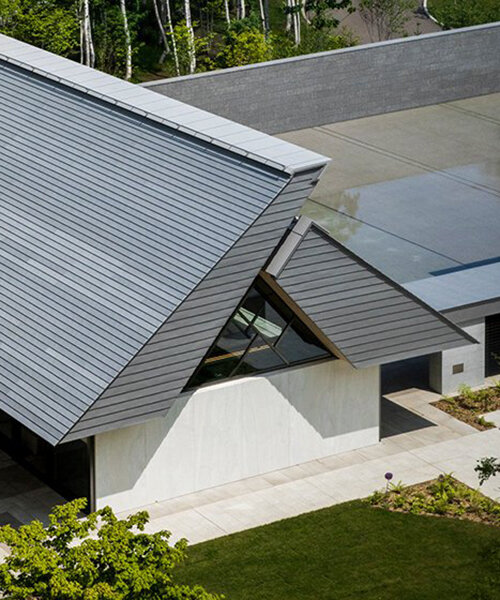The distinctive silhouette of the Japanese ridge roof, with its clean lines and elegant simplicity, has captivated the world for centuries. Traditionally crafted from wood and employing ingenious joinery techniques, these roofs transcended mere functionality, becoming a symbol of Japanese culture and artistry. Today, contemporary architects are drawing inspiration from these time-honored designs, reinterpreting them for modern structures with a fresh perspective.

A Fusion of Old and New: Embracing the Essence
The essence of the Japanese ridge roof – its emphasis on clean lines, functionality, and a harmonious relationship with nature – remains at the heart of contemporary interpretations. Architects are incorporating these principles into modern structures using innovative materials and construction methods.
-
Steel Takes Center Stage: While traditional roofs relied on wood, contemporary designs often utilize steel for its strength and versatility. Steel beams can be formed to mimic the traditional post-and-beam structure, offering a lighter and more modern aesthetic.
-
Glass Walls for Seamless Connection: Large expanses of glass walls are incorporated to blur the lines between interior and exterior spaces, a concept central to Japanese design philosophy. This creates a sense of openness and allows natural light to flood the living areas.
-
Sustainable Solutions: Modern interpretations often embrace sustainable materials and practices. Recycled wood or bamboo can be used for structural elements, while skylights and light shelves can maximize natural light penetration, reducing reliance on artificial lighting.
Creative Adaptations: Breathing New Life into Tradition
Beyond replicating the traditional form, architects are pushing the boundaries with innovative adaptations:
-
Multi-Layered Roofs: Playing with the concept of multiple roof planes, some contemporary designs feature layered or cascading roofs, adding a dynamic element to the structure.
-
Open Ridge Concepts: A bold reimagination involves creating an open space at the peak of the ridge, introducing natural light and ventilation into the core of the building.
-
Integration with Landscape: Some architects are blurring the lines between roof and landscape by incorporating rooftop gardens or terraces, further emphasizing the connection to nature.
A Bridge Between Past and Present
These contemporary interpretations of Japanese ridge roof architecture serve as a bridge between the past and present. They pay homage to the rich heritage of Japanese design while incorporating modern elements and functionalities. The result is a stunning fusion of tradition and innovation, creating structures that are both aesthetically pleasing and environmentally conscious.
A Legacy for the Future
By creatively reimagining the Japanese ridge roof, contemporary architects ensure that this architectural legacy continues to evolve and inspire. These structures not only provide functional living spaces but also serve as testaments to the enduring principles of Japanese design – simplicity, harmony, and respect for nature. As the world continues to embrace sustainable and innovative architecture, the influence of the Japanese ridge roof is certain to leave a lasting mark on the future of building design.



